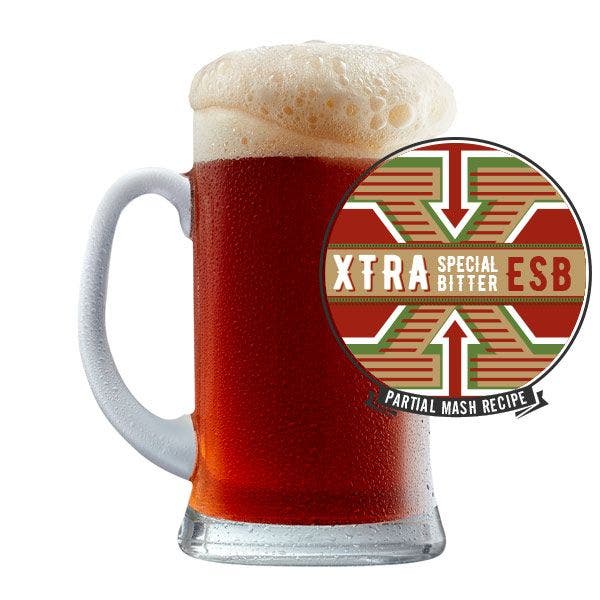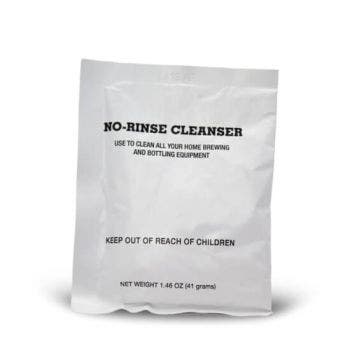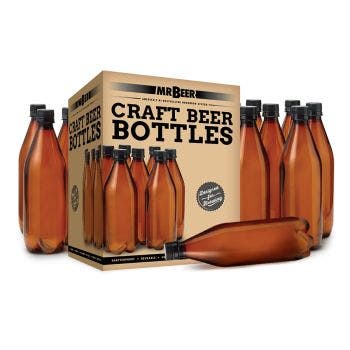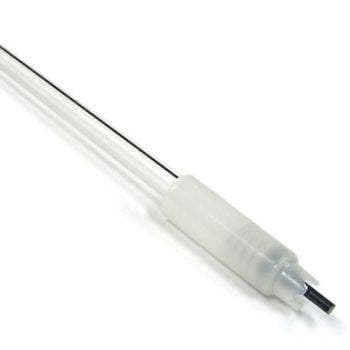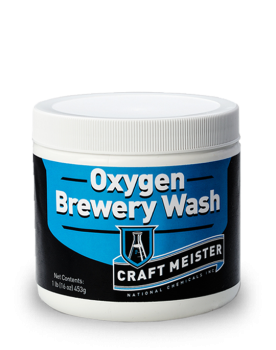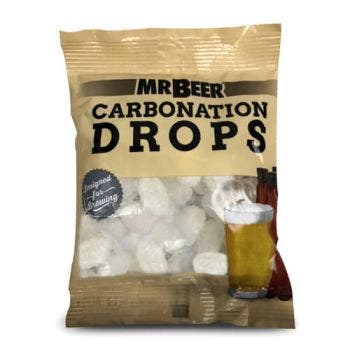Xtra Special Bitter ESB
This beer is a little bit special, maybe an xtra bit special. With the perfect balance between malt and hop bitterness, one sip of this bad boy and you will be feeling like your drinking a beer brewed for a king. This beer is an excellent all year round drinker and is perfect for any occasion.
What You Get
1 Classic American Light Brewing Extract (HME)
1 Packet of Smooth DME
1 Packet of Booster
1 Packet of Chocolate Malt
1 Packet of Crystal 40
1 Packet of Vienna Malt
2 Packets of Goldings Hops
3 Muslin Hop Sack
1 Packet of Nottingham Yeast
1 Packet of No-Rinse Cleanser
For Fans Of
Fullers ESB
Brew Specs
Flavor: Balanced
Original Gravity: 1.053
Final Gravity: 1.011
ABV: 5.53%
SRM: (Color): 16
IBU: (Bitterness): 40
STEP 1: SANITIZING
Cleaning is one of the most important steps in brewing. It kills microscopic bacteria, wild yeast, and molds that may cause off-flavors in your beer. Make certain to clean all equipment that comes in contact with your beer by following the directions below:
1. Fill clean keg with warm water to line mark 1 on the back, then add ½ pack (about 1 tablespoon) of No-Rinse Cleanser and stir until dissolved. Once dissolved, the solution is ready to use. Save the remaining ½ of No-Rinse Cleanser because you will need it for bottling.
2. Screw on lid and swirl the keg so that the cleaning solution makes contact with the entire interior of the keg, including the underside of the lid. Note that the ventilation notches under the lid may leak solution. Allow to sit for at least 2 minutes and swirl again.
3. To clean the spigot, open it fully and allow liquid to flow for 5 seconds and then close
4. Pour the rest of the solution from the keg into a large bowl. Place your spoon/whisk, can opener and measuring cup into the bowl to keep them cleaned throughout the brewing process. Leave them immersed for at least 2 minutes in cleaning solution prior to using.
5. After all surfaces have been thoroughly cleaned, do not rinse or dry the keg or utensils. Return lid to top of keg, proceed immediately to brewing.
STEP 2: BREWING
Brewing beer is the process of combining a starch source (in this case, a malt brewing extract) with yeast. Once combined, the yeast eats the sugars in the malt, producing alcohol and carbon dioxide (CO2). This process is called fermentation.
1. Remove the yeast packet from under the lid of the can of Brewing Extract, then place the unopened can in hot tap water.
2. Add the Entire packets of the Crystal 40 and the Vienna malt and half the packet of chocolate malt to one of the hop sacks and tie closed so that the grain can flow freely within the sack.
3. Add 8 cups of water to the pot. Next, add in your packet of Booster to the cool water and stir until dissolved. Bring the water to a temperature of 155-165 and hold the water at that temperature.
4. One the temperature range is achieved, add in the grain sack and allow it to steep holding the temperature range for 30 minutes.
5. While your grain is steeping, add one packet of Goldings hops to each hopsack and tie closed so that the hops have room to expand within the sacks.
6. After the 30-minute grain steep has passed remove from heat, rinse the hop sack in a colander with 1-2 cups of hot water, allowing the run-off to flow back into the pot. DO NOT SQUEEZE THE GRAIN SACK. Discard grain sack.
7. Next, open the packet of DME Slowly sprinkle in the DME into the pot of water and stir to dissolve. Increase your heat to medium-high. Continue stirring constantly to keep the rising foam in check. If it begins to rise, pull the pan off the heat and lower the temperature slightly, continuing to stir (about 5 to 10 minutes depending on your particular conditions), until you hit the hot break which is where the foam has subsided and the solution is now boiling. Stir until incorporated. (DO NOT WORRY IF YOU STILL HAVE CLUMPS FROM THE DME. THEY WILL BE BROKEN DOWN IN FERMENTATION)
8. Maintain this mixture at a low rolling boil. Once the mixture is boiling, Add in one of the hop sacks (this sack with boil for a total of 30 minutes)
9. After 20 minutes has passed. Add in the second hopsack and allow everything to boil for 10 more minutes. (30 minutes total)
10. Once a total of 30 minutes has passed, remove the mixture from the heat.
11. Open the can of Brewing Extract and pour the contents into the hot mixture in your pot. Stir until thoroughly mixed. This mixture of unfermented beer is called wort.
12. Fill your fermenter with cold tap water to the mark 1 on the back. If using any other fermenter this would be approximately 1 gallon of water.
13. Pour the wort into your fermenter, and then bring the volume of the fermenter to mark 2 by adding more cold water.
14. Stir your wort mixture vigorously with your sanitized spoon or whisk.
15. Sprinkle the Nottingham Dry Ale yeast packet into the keg, and screw on the lid. Do not stir.
Put your fermenter in a location with a consistent temperature between 68° and 78° F (20°-25° C), and out of direct sunlight. Ferment for 14 days.
STEP 3: BOTTLING & CARBONATING
After 14 days, taste a small sample to determine if the beer is fully fermented and ready to bottle. If it tastes like flat beer, it is ready. If it’s sweet, then it’s not ready. Let it ferment for 3 more days (17 total). At this point, it is time to bottle. Do not let it sit in the fermenter for longer than 24 days total.
1. When your beer is ready to bottle, fill a 1-gallon container with warm water, then add the remaining ½ pack of the No-Rinse Cleanser and stir until dissolved. Once dissolved, it is ready to use
2. Distribute the cleaning solution equally among the bottles. Screw-on caps (or cover with a metal cap if using glass bottles) and shake bottles vigorously. Allow to sit 10 minutes, then shake the bottles again. Remove caps and empty all cleaning solutions into a large bowl. Use this solution to clean any other equipment you may be using for bottling. Do not rinse.
3. Add 2 Carbonation Drops to each 740-mL bottle. For 1-liter bottles, add 2 ½ drops; for ½-liter bottles add 1 drop. Alternatively, you can add table sugar using this table as a guide.
4. Holding the bottle at an angle, fill each bottle to about 2 inches from the bottle’s top.
5. Place caps on bottles, hand tighten, and gently turn the bottle over to check the bottle’s seal. It is not necessary to shake them.
6. Store the bottles upright and out of direct sunlight in a location with a consistent temperature between 70°-76°F or 21°-24°C. Allow sitting for a minimum of 14 days. If the temperature is cooler than suggested it may take an additional week to reach full carbonation.
TIP FROM OUR BREWMASTERS
After the primary carbonation has taken place your beer is ready to drink. We recommend putting 1 bottle in the refrigerator at first for 48 hrs. After 48hrs. give it a try and if it is up to your liking put the rest of your beer in the fridge. If it does not taste quite right, leave the bottles out at room temp for another week or so. Keep following this method until your brew tastes just how you like it.
This process is called conditioning and during this time the yeast left in your beer can help clean up any off-flavors. Almost everything gets a little better with time and so will your beer

